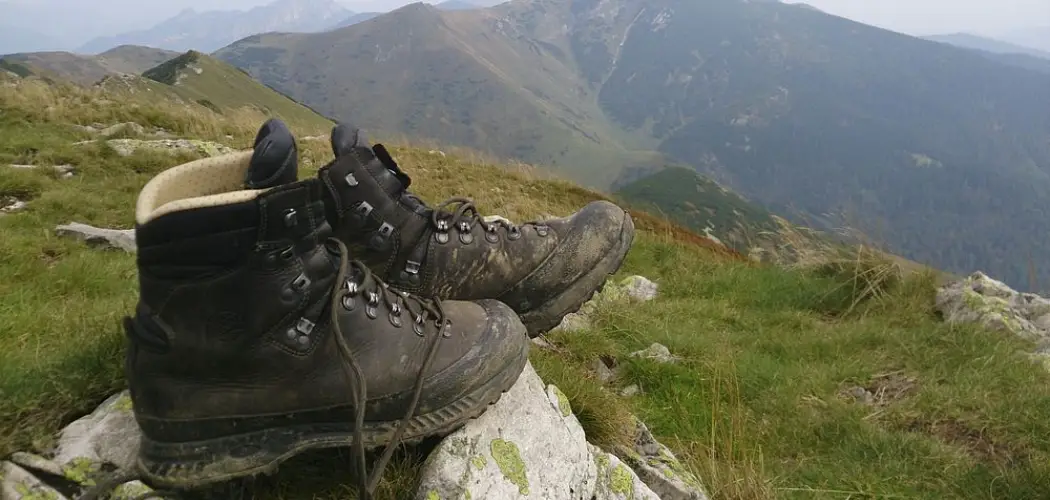Dealing with heel lift in snowboard boots can be a frustrating experience for riders. It not only affects the comfort and performance on the slopes but can also lead to foot pain and blisters.
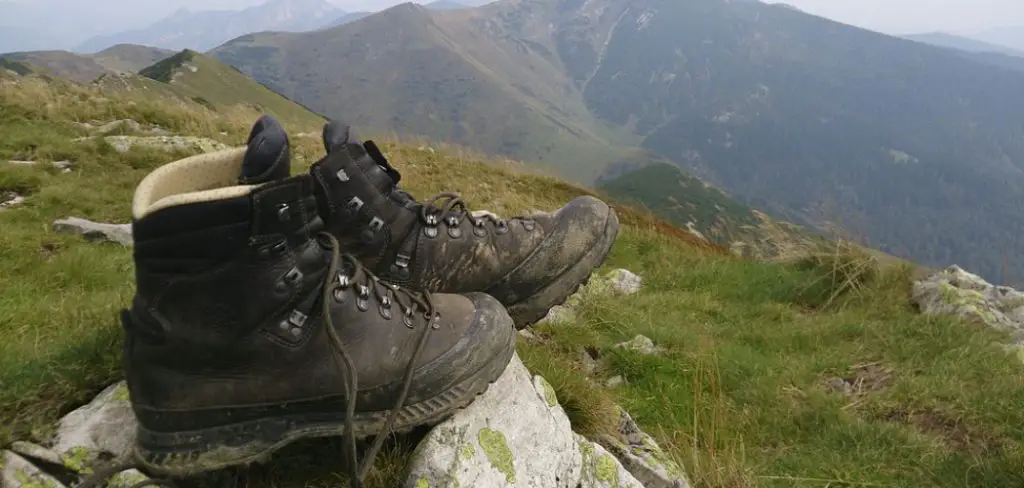
However, fear not, because in this comprehensive guide, we will explore how to fix heel lift in snowboard boots. Whether you’re a seasoned rider or a beginner, the solutions provided in this article will help you achieve a snug and secure fit, allowing you to fully enjoy your snowboarding adventures.
From lacing techniques to boot fitting adjustments, we will delve into a range of strategies to eliminate heel lift and ensure that your snowboard boots provide the support and control you need. Say goodbye to discomfort and hello to improved performance with the tips and tricks offered in this informative piece.
Importance of Addressing Heel Lift in Snowboard Boots
Snowboarding is a popular winter sport that involves gliding down a snow-covered slope on a board attached to one’s feet. Just like any other sport, proper gear and equipment are essential in ensuring comfort, safety and ultimately, a great experience. One particular issue that many snowboarders face is heel lift in their boots. This is when there is excess space or movement around the heel area, causing discomfort and affecting overall performance on the board.
Heel lift can occur for various reasons such as improper boot fitting, worn out boots, or weak ankle muscles. It may seem like a minor problem but it can lead to bigger issues such as blisters, foot pain, and even injury. This is why it is important to address heel lift in snowboard boots as soon as it is noticed.
Not only does heel lift affect the physical aspect of snowboarding, but it can also greatly impact one’s confidence and enjoyment on the slopes. Imagine trying to carve down a steep slope with loose boots that keep sliding around your feet, it can be frustrating and even dangerous.
Moreover, ignoring heel lift can result in added expenses as you may need to constantly replace your boots due to excessive wear and tear or invest in additional gear such as support pads or custom insoles. By addressing this issue early on, you can save both time and money in the long run.
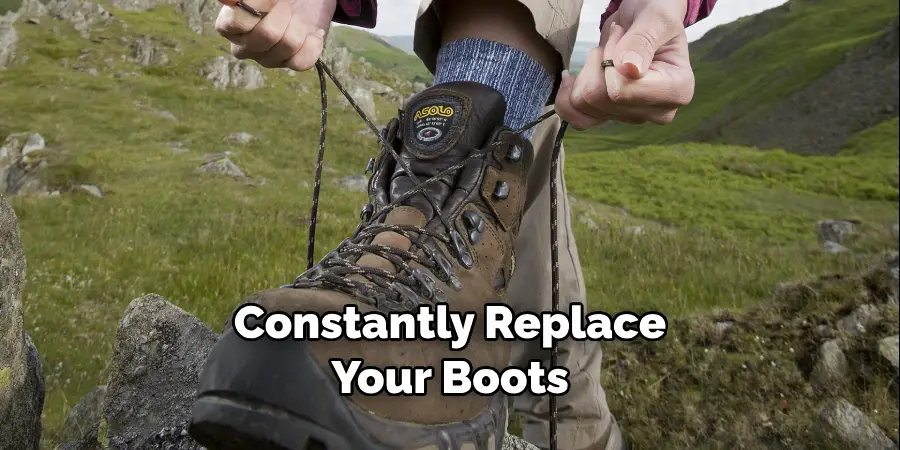
The Impact of Proper Boot Fit on Performance and Comfort
Whether you are a beginner or an expert snowboarder, having properly fitting boots is crucial for your performance and comfort on the mountain. One common issue that many snowboarders face is heel lift in their boots.
This happens when there is too much space between the back of the boot and the rider’s heel, causing it to lift and slide around while riding. Not only can this be uncomfortable and annoying, but it also affects your control and ability to maneuver on your board. In this article, we will discuss how to fix heel lift in snowboard boots and why it is important to have a proper boot fit.
Firstly, it is important to understand that heel lift can occur for a variety of reasons. It could be due to improper sizing, not tightening your boots enough, or even just the shape of your foot. No matter the cause, it is crucial to address and fix heel lift as it can greatly impact your riding experience. Not only can it affect your balance and control, but it can also lead to blisters and discomfort.
The first step to fixing heel lift is to make sure you have the proper boot size. This may seem obvious, but many snowboarders make the mistake of buying boots that are too big for them, thinking they will be more comfortable.
10 Methods How to Fix Heel Lift in Snowboard Boots
1. Use a Heel Lock
One of the most effective ways to prevent heel lift in snowboard boots is to use a heel lock. A heel lock is a device that helps to keep your foot securely in place inside the boot, eliminating any movement that could cause heel lift. To use a heel lock, you simply attach it to the back of the boot and then tighten it until it fits snugly against your ankle. This will help to reduce any slippage or movement, thereby reducing the risk of heel lift.
2. Choose the Right Size Boot
Another important factor when it comes to preventing heel lift in snowboard boots is choosing the right size boot for your foot. If you choose a boot that is too big or too small for your foot, this can increase the risk of heel lift as there will be more space between your foot and the boot, allowing your foot to move around more freely and potentially causing heel lift. Make sure you try on several different sizes before making your purchase to ensure that you get the best fit for your feet.
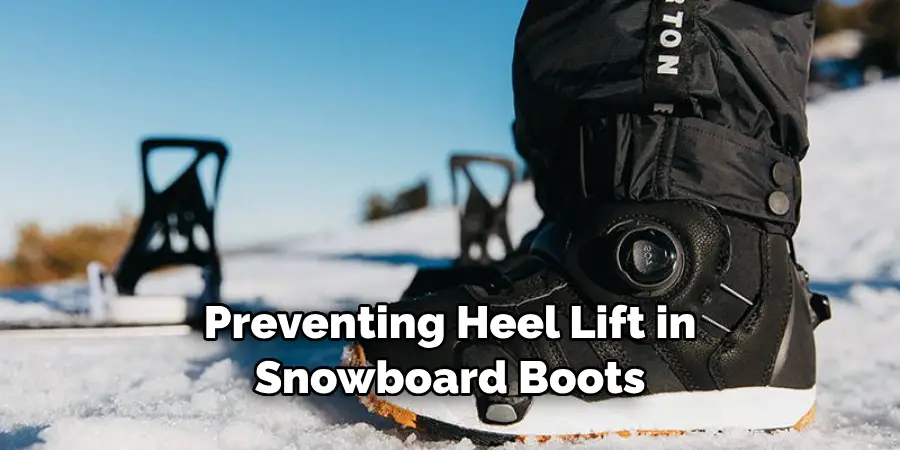
3. Adjust Your Bindings
If you are having trouble with heel lift even after trying all of these methods, then another option is to adjust your bindings. By changing the angle of your bindings or adjusting their width, you can help reduce any excess movement in your boots and thus reduce the risk of heel lift.
4. Wear Thick Socks
Wearing thick socks can also help to reduce the risk of heel lift in snowboard boots as they provide an extra layer between your feet and the boots, helping to keep them firmly in place and reducing any excess movement that could cause heel lift.
Make sure that you choose socks made from materials such as wool or synthetic fibers, as these will provide better insulation than cotton socks and will, therefore, keep your feet warmer while riding in cold conditions.
5. Use Heel Pads
Another way to prevent heel lift in snowboard boots is by using special pads designed specifically for this purpose. These pads are placed inside the boot at key pressure points which help to keep your feet securely in place within the boot and reduce any excess movement which could lead to heel lift.
Additionally, these pads provide extra cushioning, which helps to make long days on the slopes more comfortable for riders who suffer from sore feet or blisters due to rubbing against their boots while riding.
6. Tighten Your Laces
Tightening up your laces can also help prevent excessive movement inside snowboard boots which can lead to unwanted heel lift. Make sure that you tie up all laces evenly so that they are tight but not overly tight, as this could cause discomfort while riding. Additionally, make sure that you double-knot them so they remain secure throughout your session.
7. Use Heat Moldable Liners
Heat moldable liners are one of the best ways to get a custom fit for snowboard boots, as they allow riders to shape them according to their own individual needs. The heat moldable material allows riders to customize their fit by adding extra cushioning where needed or providing more support at certain pressure points. This helps eliminate unwanted movement within snowboard boots, thus reducing any potential for unwanted heel lift.
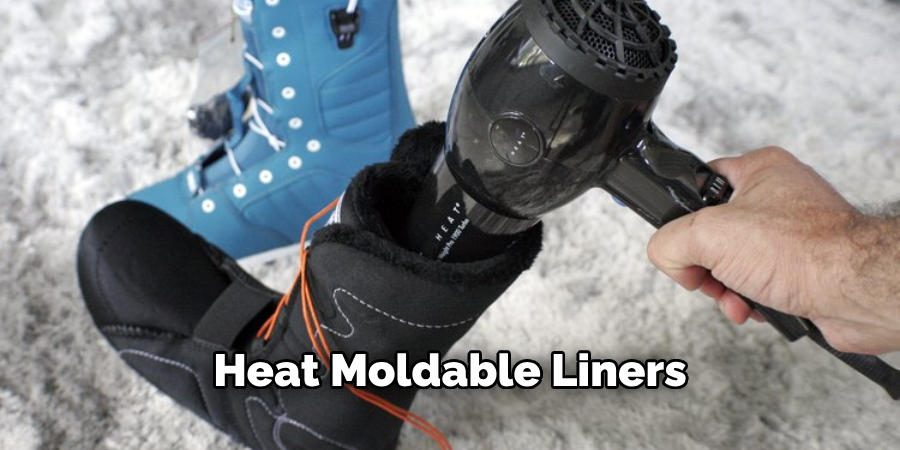
8. Use Footbeds
Footbeds are another great way of improving fit within snowboard boots, as they provide additional arch support, which helps distribute weight evenly across both feet while riding. This ensures that there is no excessive pressure being placed on one area while riding, thus helping reduce any potential for unwanted heel lift. Additionally, footbeds can also provide extra cushioning which helps make long days on slopes more comfortable by absorbing shock from rough terrain.
9. Add Gel Inserts
Gel inserts are another great way of improving comfort levels within snowboard boots, as they provide additional cushioning at key pressure points such as heels and toes where riders may experience discomfort due to rubbing against their boots while riding.
They also help absorb shock from rough terrain, helping reduce fatigue over long periods of time spent on slopes without compromising performance levels. Finally, gel inserts can also help reduce any potential for unwanted movement within snowboard boots, thus helping prevent unwanted heel lifts when shredding powdery runs!
10. Wear Boot Gaiters
Boot gaiters are an essential piece of equipment when it comes to preventing water from entering into snowboard boots during wet weather conditions; however, they can also be used effectively when trying to prevent unnecessary movements within snowboard boots which may lead to undesired results such as unwanted heeling lifts during rides! Boot gaiters wrap around ankles tightly, creating an airtight seal ensuring no moisture enters into shoes whilst simultaneously keeping feet firmly secured within shoes with minimal room for movement!
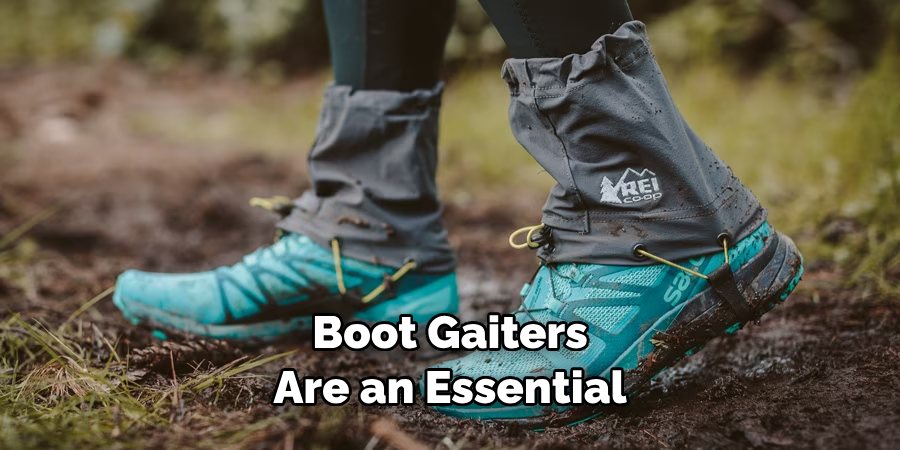
Conclusion
In conclusion, it’s important to know how to fix heel lift in snowboard boots. Properly dialing in your binding settings can make a world of difference when it comes to riding comfort and safety. Additionally, make sure you’re always wearing the right size snowboard boots for the best fit possible.
It’s also extremely beneficial if you can find a pair of boots with superior shock absorption technology as well as features like turbo laces that offer maximum adjustability and convenience. Heel lift is one issue that’s worth investing time in overcoming, as it could save from a lot of pain and help you gain greater control over your shredding skills on the slopes.

